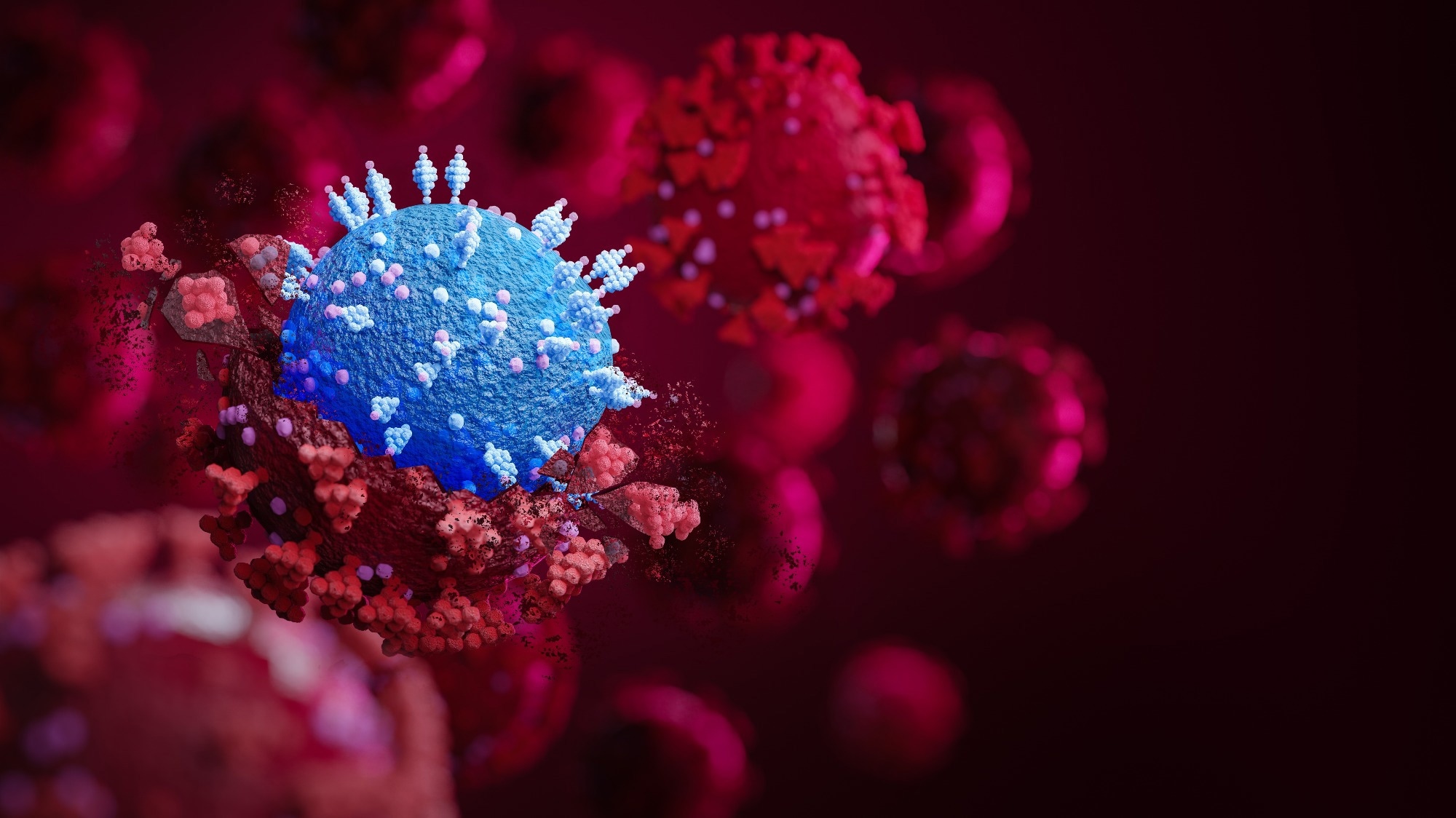In a recent study posted to the bioRxiv preprint* server, researchers in Japan evaluated the virological characteristics of the severe acute respiratory syndrome coronavirus 2 (SARS-CoV-2) KP.3.1.1 variant.
SARS-CoV-2 BA.2.86.1.1, viz., the JN.1 variant, has outpaced XBB lineages by the start of 2024. It emerged from the BA.2.86.1 variant with an L455S substitution within the spike protein. The sub-variants of JN.1, such as KP.2 and KP.3, have emerged over time; these sub-variants harbor R346T, F456L, and Q493E substitutions in the spike. In addition, JN.1 sub-variants, such as LB.1, KP.2.3, and KP.3.1.1, which acquired a serine deletion in the spike, have been spreading since June 2024. Previously, the authors characterized the features of SARS-CoV-2 LB.1, KP.2, KP.2.3, and KP.3 variants.
 Study: Virological characteristics of the SARS-CoV-2 KP.3.1.1 variant. Image Credit: Fit Ztudio / Shutterstock
Study: Virological characteristics of the SARS-CoV-2 KP.3.1.1 variant. Image Credit: Fit Ztudio / Shutterstock

 *Important notice: bioRxiv publishes preliminary scientific reports that are not peer-reviewed and, therefore, should not be regarded as conclusive, guide clinical practice/health-related behavior, or treated as established information.
*Important notice: bioRxiv publishes preliminary scientific reports that are not peer-reviewed and, therefore, should not be regarded as conclusive, guide clinical practice/health-related behavior, or treated as established information.
The study and findings
In the present study, researchers investigated the characteristics of SARS-CoV-2 KP.3.1.1. First, they used a Bayesian multinomial logistic model to estimate the variant’s relative effective reproduction number (Re) based on surveillance data from the United Kingdom (UK), the United States (US), Canada, Spain, and France.
The Re of the KP.3.1.1 variant was 1.2-fold higher in Spain than that of JN.1; it was much higher than that of LB.1, KP.2, KP.2.3, and KP.3 variants. The Re of KP.3.1.1 was over 1.5-fold higher than that of JN.1 in the US, UK, and Canada. Besides, KP.3.1.1 had a much higher Re than LB.1, KP.2, KP.2.3, and KP.3 variants in all countries. This suggested that the KP.3.1.1 variant will spread globally along with other sub-lineages of JN.1.
Next, the team used a lentivirus-based pseudovirus assay to examine the virological properties of the KP.3.1.1 variant. HOS cells expressing angiotensin-converting enzyme 2 (ACE2) and transmembrane protease, serine 2 (TMPRSS2) (HOS-ACE2/TMPRSS2 cells) were infected with pseudoviruses displaying the spike protein of KP.3.1.1 or KP.3. The infectivity of KP.3.1.1 and KP.3 was compared.
The researchers observed significantly higher infectivity of KP.3.1.1 compared to KP.3. Further, they performed neutralization assays using pseudoviruses harboring the spike of KP.3.1.1, KP.2.3, or KP.3 against convalescent or vaccine sera. Convalescent sera were obtained from fully vaccinated individuals with an EG.5 or XBB.1.5 breakthrough infection.
Besides, convalescent sera were obtained from JN.1- or HK.3-infected donors. Vaccine sera were collected from recipients of the monovalent XBB.1.5 vaccine. KP.3.1.1 had a 1.4- to 1.6-fold lower half-maximal neutralization titer (NT50) than KP.3 against all convalescent sera groups. It also had a lower NT50 than KP.3 against vaccine sera. Notably, KP.3.1.1 exhibited significantly higher resistance than KP2.3 to convalescent sera from HK.3- or JN.1-infected individuals.
Conclusions
The findings indicate that the SARS-CoV-2 KP.3.1.1 variant has higher Re, pseudovirus infectivity, and neutralization evasion than the KP.3 variant. This is consistent with a recent report that JN.1 sub-variants with the serine deletion in the spike exhibit increased immune evasion and Re relative to other JN.1 sub-variants without the serine deletion, underscoring the evolutionary significance of the serine deletion within JN.1 lineages. Overall, these findings have implications for public health measures, suggesting that current strategies may need to be adapted to account for the increased transmissibility and immune evasion of the KP.3.1.1 variant.

 *Important notice: bioRxiv publishes preliminary scientific reports that are not peer-reviewed and, therefore, should not be regarded as conclusive, guide clinical practice/health-related behavior, or treated as established information.
*Important notice: bioRxiv publishes preliminary scientific reports that are not peer-reviewed and, therefore, should not be regarded as conclusive, guide clinical practice/health-related behavior, or treated as established information.
Journal reference:
- Preliminary scientific report.
Kaku Y, Uriu K, Okumura K, The Genotype to Phenotype Japan (G2P-Japan) Consortium, Ito J, Sato K. Virological characteristics of the SARS-CoV-2 KP.3.1.1 variant. BioRxiv, 2024, DOI: 10.1101/2024.07.16.603835, https://www.biorxiv.org/content/10.1101/2024.07.16.603835v1